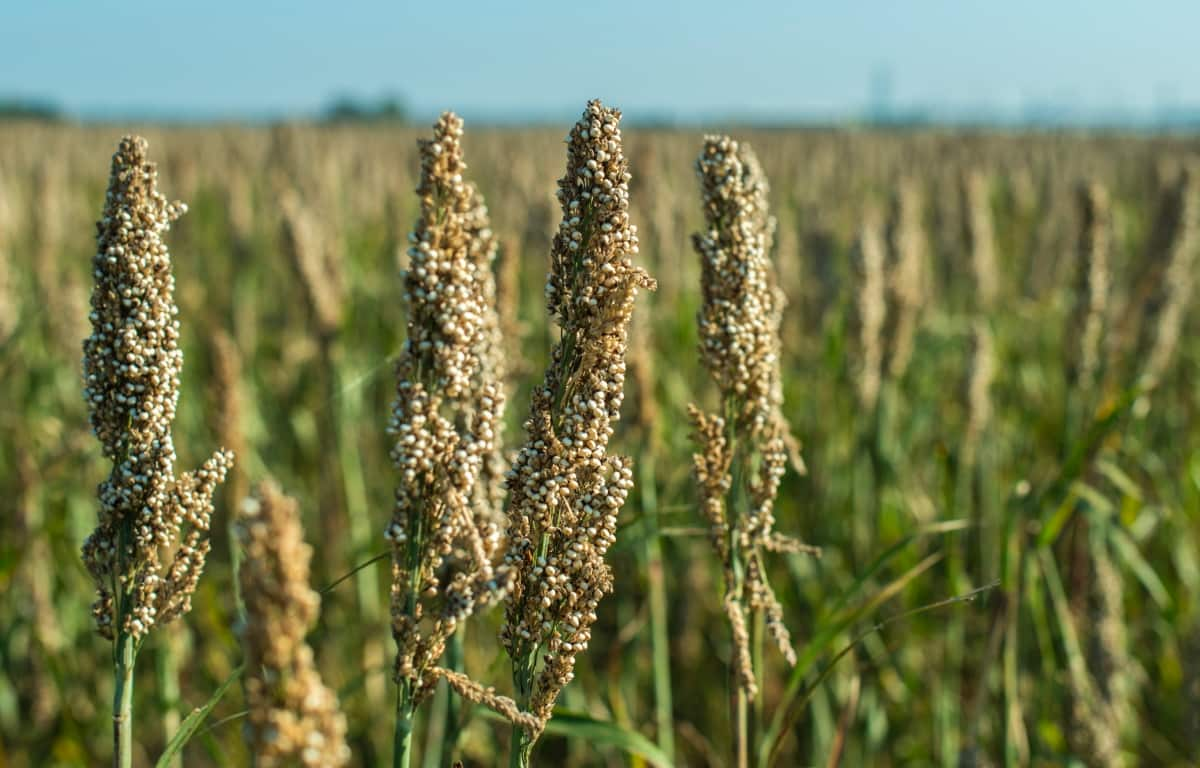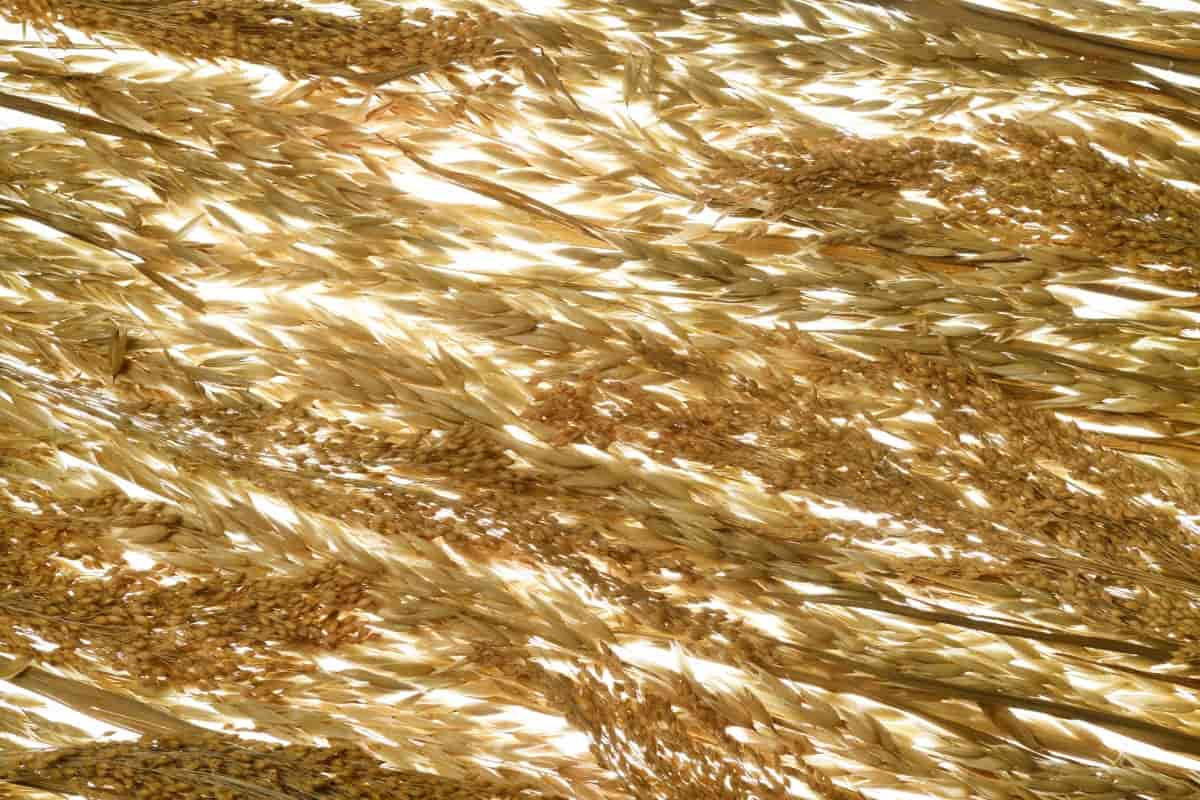Millet is becoming increasingly popular among health-conscious consumers. This gluten-free and nutrient-rich superfood has gained attention for its versatility in recipes and ability to thrive in harsh growing conditions. However, as with any crop, millet cultivation faces challenges from pest infestations that can damage yields and quality.

Millet Pest Control
Common Pests Affecting Millet: Identification and Treatment
- Shoot Fly: This pest affects young plants by laying eggs on leaves, which then hatch into maggots that feed on the plant’s tissues. Shoot fly infestations can stunt plant growth and reduce yields.
- Stem Borer: These insects burrow into stems and cause damage by feeding on plant tissues. Infested plants may show symptoms like wilting or bending in the affected area.
- White Grubs: These soil-dwelling pests feed on roots, causing significant damage to root systems and ultimately impacting crop productivity.
- Pink Borer: Affecting finger millet mainly, these borers bore holes in stem tissue, leading to foliage discoloration due to sap exudation from entry points.
Identifying these pests early on is crucial in preventing severe infestations. For instance, early detection of stem borers can help farmers apply insecticides at the right time, thereby reducing the damage inflicted by this pest. Effective treatment measures include cultural practices such as timely sowing or planting, which can help create an unfavorable environment for pest development. Integrated Pest Management (IPM) strategies like crop rotation, resistant varieties selection, intercropping, and biological control methods play key roles in curbing pest outbreaks.
How to Control Millet Pests?
- Millet pests can be a serious problem for farmers, as they can cause significant damage to crops and reduce yields.
- One effective method of controlling millet pests is using biocontrol agents. These are natural enemies of the pests that feed on them and help to regulate their populations.
- Another approach is through integrated pest management (IPM) techniques. This involves combining different pest control methods into a strategy tailored to your needs.
- In addition to these methods, organic pesticides can help control millet pests without harming beneficial insects or pollinators.
Best Practices and Strategies for Millet Pest Control
- Crop rotation: Rotate your crop yearly to avoid pests’ buildup in one area.
- Early planting: Plant your millet as early as possible to grow stronger before the pests set in.
- Healthy soil: Maintain healthy soil using organic manure and compost, which provides essential nutrients for millet growth and helps prevent pest infestations.
- Pest-resistant varieties: Choose varieties resistant or tolerant to common millet pests like shoot-fly, stem-borer, and white grubs.
- Natural predators: Encourage natural predators such as birds, spiders, and insects that feed on pests by providing habitat around your fields.
- Monitoring: Regularly monitor your crops for signs of pest damage so you can take action before the problem gets out of hand.
- Integrated Pest Management (IPM): Use IPM techniques such as pheromone traps and cultural methods like intercropping with legumes or trap crops to control specific pests without harming beneficial insects.
Natural Remedies to Control Millet Pests
- Natural remedies are an effective method to control millet pests. These solutions are not only safe for the environment, but they also help to maintain the quality and nutritional value of your millet crop.
- One popular natural remedy is neem oil. This oil derived from neem trees contains a compound that repels insects and disrupts their growth cycle. Neem oil can be sprayed directly on millet plants or mixed with water for a more diluted solution.
- Another option is garlic spray, which can be made by crushing garlic cloves and steeping them in water overnight before straining and spraying them onto plants. Garlic has natural insecticidal properties that can deter pests such as aphids and spider mites.
- Diatomaceous earth is another effective natural remedy as a physical barrier against pests.
- Planting companion crops such as marigolds or basil around your millet fields can also help control pests naturally. These plants emit strong odors that repel certain insect species while attracting others that feed on harmful pests.
In case you missed it: How to Start Millets Farming in the USA: A Step-By-Step Production Guide

Integrated Pest Management Techniques for Millet
- IPM is a sustainable approach that combines different pest control techniques to manage pests effectively. For millet, IPM can be used to minimize the damage caused by pests while reducing the use of harmful chemicals.
- The first step in IPM for millet is monitoring. Farmers should regularly check their fields for signs of pest infestation and take appropriate action as soon as possible.
- One effective technique is crop rotation, which involves planting different crops each season. This helps to disrupt the life cycles of pests and reduce their populations over time.
- Another method used in IPM is biological control, which involves introducing natural predators or parasites that feed on specific pests. This can help to keep pest populations under control without using harmful chemicals.
- In addition, farmers can use physical methods such as traps and barriers to prevent pests from reaching their crops. These methods are often more environmentally friendly than chemical pesticides.
Safe Insecticides for Controlling Millet Pests
- Insecticides are the most widely used method for controlling pests in millet cultivation. However, many insecticides have harmful side effects that could harm humans and the environment.
- To avoid risks, it is important to use safe insecticides that are effective yet eco-friendly. One such option is neem oil, derived from the neem tree and effective against a range of millet pests.
- Another natural option is garlic extract, which has insecticidal properties and can help repel pests like shoot-fly and stem-borer. Similarly, tobacco extracts have also been effective against several millet pests.
- Furthermore, some synthetic insecticides can be considered safe if used correctly. For example, spinosad-based pesticides have been proven to be highly effective against various pest insects while being relatively non-toxic to beneficial insects like bees.
Organic Methods for Managing Millet Pests
Organic methods for managing millet pests are becoming popular due to the increasing demand for healthy and sustainable food production. Organic pest management is a holistic approach focusing on prevention rather than cure. It aims to create a balanced ecosystem where pests and their natural predators coexist, reducing the need for chemical pesticides.
One way to control millet pests organically is through crop rotation. Growing different crops in succession helps to break the life cycle of pests and diseases. Another method is intercropping, where two or more crops are grown in the same field. This can help repel pests, reduce damage, and improve soil health.
Using beneficial insects like ladybugs, lacewings, and parasitic wasps is another organic approach that works well with millets. These insects feed on harmful insect species without causing any harm themselves while also pollinating flowers. Another effective method of organic pest control involves using natural repellents such as neem oil or garlic spray, which disrupts the feeding habits of insects by masking plant odors or blocking receptors, making it difficult to locate their host plants.
Biocontrol Agents for Millet Pest Treatment
Biocontrol agents are a type of biological pest control that involves using natural enemies to manage pests. In millet cultivation, biocontrol agents can be important in preventing and controlling pest infestations. These agents include beneficial insects, such as lady beetles, lacewings, and parasitic wasps.
Using biocontrol agents for millet pest management helps reduce reliance on harmful pesticides and provides a sustainable solution for long-term crop health. Farmers can achieve balanced control without harming non-target organisms or disrupting the environment’s ecological balance by promoting natural predators to target specific pests in the ecosystem.
Minimizing Damage from Pests in Millet Cultivation
- One effective way of minimizing pest damage in millet farming is through proper field management practices. This includes timely planting, adequate plant spacing, and weed control measures.
- Another method of managing millet pests is regularly scouting for signs of infestation or injury on crops, such as wilting leaves or stunted growth. Early detection allows farmers to take necessary measures, such as applying insecticides or removing infected plants.
- Choosing resistant varieties like Pearl Millets, which is less attractive to insects, also lowers pests’ impact, resulting in better yields while using fewer pesticides, thus promoting sustainable agriculture practices.
In case you missed it: Finger Millets Production Guide: A Step-By-Step Cultivation Practices

Conclusion
Millet is a group of small-seeded grasses grown as cereal crops or forage. It is an ancient grain that humans have cultivated for thousands of years. Millet comes in various types, including pearl, foxtail, proso, finger, and more. Millet is a widely cultivated crop worldwide and is susceptible to various pests.
- Feed Your Flock for Less: Top 10 Tips to Save on Chicken Feed
- Ultimate Guide to Ossabaw Island Hog: Breeding, Raising, Diet, and Care
- Hatching Answers: The Top 10 Reasons Your Chickens Aren’t Laying Eggs
- Eggs and Economics: Breaking Down the Cost of Raising Backyard Chickens
- Defend Your Greens: Proven Methods to Keep Iguanas Out of Your Garden
- Ultimate Guide to Cinnamon Queen Chicken: A Comprehensive Guide for Beginners
- Ultimate Guide to California Tan Chicken: Breeding, Raising, Diet, Egg-Production and Care
- Ultimate Guide to Marsh Daisy Chicken: Breeding, Raising, Diet, and Care
- 10 Types of Chicken Farming Businesses You Can Start for Profits